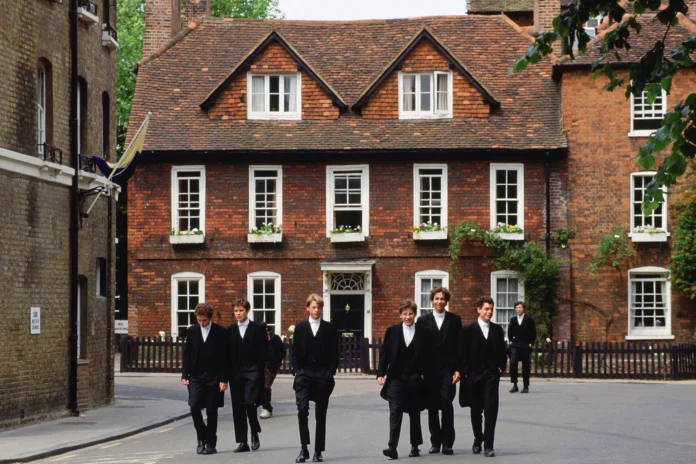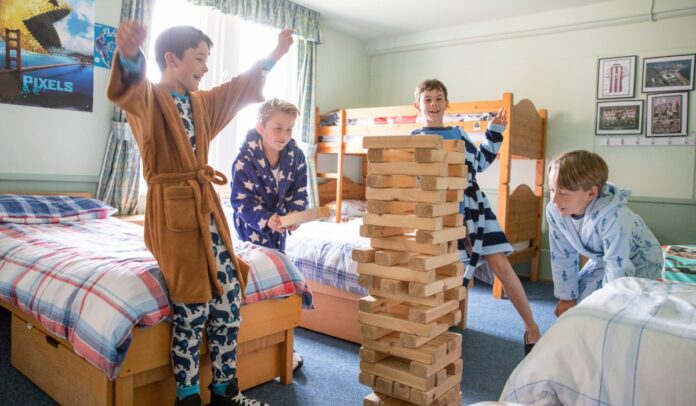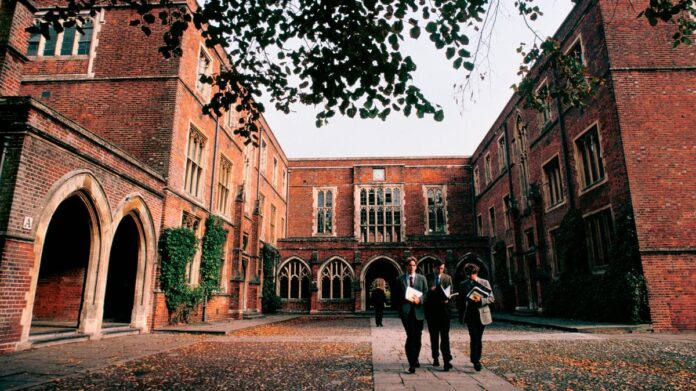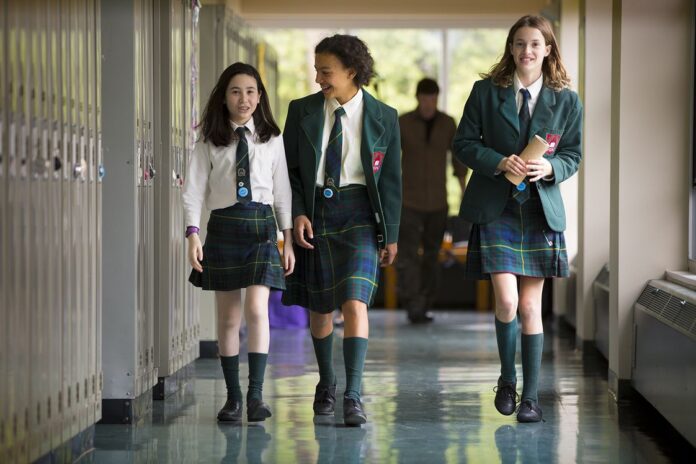Boarding schools, wilderness programs, brat camps, and military academies are the subjects of this research. The popularity and enrollment rates of these schools are increasing as they become cheaper; nonetheless, “little is known about the usage of residential education programs in the United States.” Even less is known about the utilization of residential education with foster adolescents or other students at risk of failing to complete high school”
The experts from StudyEssay write that it is common in today’s society for parents with at-risk youth to consider enrolling them in means of residential education, or newer types of therapeutic, residential education. By studying the types of institutions and their effects on adolescents, we can discover the benefits, disadvantages, and variations of learning and living away from home.

Boarding Schools
Boarding schools were the first type of residential education in the U.S. Although they began as a way to prevent excessive transportation, they soon became elitist institutions, mainly located in the Northeast, as a way for upper-class parents to assure that their child obtains a good education:
In the United States, boarding schools for children have existed for almost 250 years. Although boarding schools are now commonly thought of as the sole province of wealthy children seeking an enriching academic living environment, there has long been and continues to be interest in adapting this model for less fortunate children.
As Swanson and Schneider (1999) suggest, boarding schools bring opportunities to their students. Social mobility can result from these institutions through networking with like-minded individuals. Similarly, Goldsmith (2000) calls this era “the Renaissance of Boarding Schools,” because of the success that former students obtain from attending these institutions. Overall, boarding schools prove to be sufficient in motivating their students and maintaining strong school bonds (Swanson and Schneider 1999), yet, the effects on parental absence during adolescent years has yet to be researched thoroughly.
In 1981, 4.4% of teenagers ages 15 to 17 lived without their parents (Montemayor and Leigh 1982). The parental absence rates for all children (0 18 years of age) have also increased over the last few decades. With the increasing popularity of boarding schools and other means of residential education, it is becoming more common for adolescents to spend their high school years at an institution as opposed to living at home with their families. It is important for our society to understand what changes occur after an adolescent life away from home because it is more common for people to make use of the benefits residential education offers. Although these institutions have been proven to help students excel academically, we have to analyze what types of students benefit from this learning environment and which ones do not.

How Are Residential Education And Socialization Connected?
Parents often choose to enroll their child in residential for socialization:
Kids can build coherent friendships with other students in the school through social ties. Friendship links are the glue that holds the upper class together in a web of power relationships that extend beyond the classroom and often extend into students’ professional, political, and social life.
Although socialization is an obvious advantage of residential education, the sort of living circumstances in which the teenager has an impact on their capacity to socialize. If the type of living situation is vastly different than the lifestyle of the child before enrollment, they could return to their previous behavioral patterns, therefore erasing the effects of the program or programs (Rubin et. al. 2007). Through examining the types of living models that residential education provides, we are able to analyze whether the adolescent will be able to adapt to
Students with greater school relationships are less likely to engage in risky or aggressive conduct, as Sprott, Jenkins, and Doob (2005) discovered. Students who have poor school bonds are those whose grades have dropped and who are not active or engaged in their school’s activities. For kids with shaky school relationships, residential schooling is a popular option. Because residential education requires students to live at their school, students are able to engage themselves in sports, clubs, and other extracurricular activities without having to travel.

What Effect Does Residential Education Have on Behavior?
Residential education can help those with behavioral issues create stronger school bonds, but can also cause some to feel isolated. A student needs to carefully and comfortably adjust to their new living situation in order to succeed in school. As other researchers have discovered (Newton, Litrownik, and Landsverk, 2000; Rubin et. al. 2007; Lee and Barth 2009), involuntary or unstable placement into these programs can also cause the at risk adolescent to have poorer grades. Living situations have a direct correlation to how well a student can transition to living at a residential institution.
We are increasingly seeing these institutions play a key role in rectifying high-risk conduct (Dryfoos 1990). For at-risk kids, wilderness programs are the most popular option for residential education (Romi and Kohan 2004). These programs require students to live outdoors and learn to be independent through basic survival techniques. While boarding schools sometimes attempt to create a family like environment for the student, wilderness programs and brat camps attempt to place the adolescent into a different environment than they are used to (Harper and Russell 2008). This change of surroundings may produce culture shock, but it will give the student time to acclimate to the new way of life.
Generally, the students at wilderness programs will camp outdoors in order to separate them from society. By freeing students from their normal routines, wilderness programs attempt to rid students of their bad habits. “Adventure or Wilderness Programs (WP) provided participants with various life skills, including planning abilities, teamwork, confronting stress situations, assuming personal responsibility, and leading and being led in a group, in addition to allowing them to experience the outdoors and build physical stamina” (Romi and Kohan 2004: 115). This type of residential education focuses on correcting behavioral issues and strengthening independence, leaving academic achievement to other residential institutions. Wilderness programs have helped students socialize with others in a supervised, dependent setting. This type of living situation is so different from how adolescents generally live in the home, that they may have trouble adjusting to the environment once they return from the program.

4 Types of Residential Education
There are four types of living models for residential education institutions, according to the Coalition of Residential Education (CORE), which defines residential education as “an umbrella term for community-like settings where at-risk children live and learn together, outside their homes, within stable, supportive environments.”
- One type is a family style home, where a married couple lives with a group of students in a large home. Each student has their own living quarters or shares them with another student, while the “house parents” live in a separate area of the home. This is a common living situation for students of small college preparatory academies and boarding schools. With a home like environment to live in, students are less likely to be at risk or struggle to achieve academically. As Lawton, Silverstein and Bengtston (1994) suggest, having a nuclear style family is beneficial to the development of an adolescent.
- Another type of residential education living model is dormitory living. Similar to many college dormitories, this living situation requires a resident advisor to supervise the halls. In this living model, students have separate living quarters that they may share with other students but are able to speak with the resident hall advisor when faced with obstacles. While this model doesn’t encourage at-risk behavior, the lack of supervision and a family structure in this model can result in negative types of behavior. In boarding schools, military academies, and certain brat camps, this is the most popular sort of residential education living style.
Source: helpyourteennow.com - Depending on the student’s age or needs, several schools provide both dormitory and family type housing. This mixed model can help students correct behavioral problems, while allowing more freedom for students that maintain their grades. Although the students have parental figures close to their living spaces, they do not share a common area or share meals often. This can prevent them from maintaining a family dynamic that Lye (1996) discusses in her studies on parent absent adolescents.
- Dormitories with a changing staff are an uncommon living arrangement seen in particularly big boarding schools or military academies. Although this high security environment is generally safe, this model is not recommended for at-risk youth because of the lack of attention an individual student gets from a resident hall advisor or parent like individual. Adolescents who live apart from their parents may feel lonely. It is important for a residential institution to provide housing that maintains a sense of community in order to prevent at risk behavior. This study attempts to examine the factors of residential education that damage or strengthen the parent child relationship for students at these institutions.






![Calgary’s Hottest Neighborhoods for Luxury Homebuyers [2024]](https://thewashingtonote.com/wp-content/uploads/2024/04/Calgary-324x160.png)



